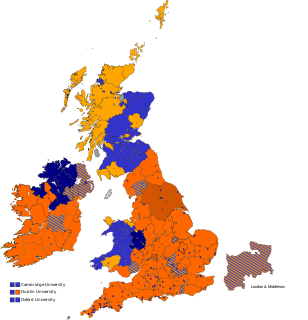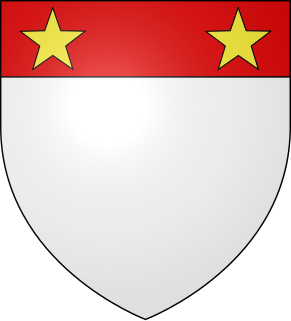Related Research Articles

The Commonwealth was the political structure during the period from 1649 to 1660 when England and Wales, later along with Ireland and Scotland, were governed as a republic after the end of the Second English Civil War and the trial and execution of Charles I. The republic's existence was declared through "An Act declaring England to be a Commonwealth", adopted by the Rump Parliament on 19 May 1649. Power in the early Commonwealth was vested primarily in the Parliament and a Council of State. During the period, fighting continued, particularly in Ireland and Scotland, between the parliamentary forces and those opposed to them, as part of what is now referred to as the Third English Civil War.

John Lambert was an English Parliamentary general and politician. He fought during the English Civil War and then in Oliver Cromwell's Scottish campaign (1650–51), becoming thereafter active in civilian politics until his dismissal by Cromwell in 1657. During this time he wrote the Instrument of Government, one of only two codified constitutions ever adopted in Britain, and was influential in bringing about the Protectorate.

Sir Arthur Haselrig, 2nd Baronet was a leader of the Parliamentary opposition to Charles I and one of the Five Members whose attempted arrest sparked the 1642–1646 First English Civil War. He held various military and political posts during the 1639–1651 Wars of the Three Kingdoms but became an opponent of Oliver Cromwell during the Protectorate. In 1660, his actions inadvertently helped restore Charles II to the throne; unlike many senior Parliamentary leaders, his life was spared but he was confined to the Tower of London, where he died on 7 January 1661.

The Rump Parliament was the English Parliament after Colonel Thomas Pride purged the Long Parliament, on 6 December 1648, of those members hostile to the Grandees' intention to try King Charles I for high treason.
The Committee of Safety, established by the Parliamentarians in July 1642, was the first of a number of successive committees set up to oversee the English Civil War against King Charles I, and the Interregnum.
The English Council of State, later also known as the Protector's Privy Council, was first appointed by the Rump Parliament on 14 February 1649 after the execution of King Charles I.

Yorkshire was a constituency of the House of Commons of the Parliament of England from 1290, then of the Parliament of Great Britain from 1707 to 1800 and of the Parliament of the United Kingdom from 1801 to 1832. It was represented by two Members of Parliament, traditionally known as Knights of the Shire, until 1826, when the county benefited from the disfranchisement of Grampound by taking an additional two members.
William Lambert may refer to:

The Royal Tennis Court, Hampton Court Palace is a Grade I listed court for playing the sport of real tennis. It was built for Cardinal Wolsey between 1526 and 1529. Henry VIII of England played there from 1528. This court is still home to an active tennis club. In 2015 it was closed to visitors for major restoration works.
Events from the year 1659 in England.

William Aubrey was Regius Professor of Civil Law at the University of Oxford from 1553 to 1559, and was one of the founding Fellows of Jesus College, Oxford. He was also a Member of Parliament for various Welsh and English constituencies between 1554 and 1592.
This is a list of members of the Tasmanian House of Assembly between the 1866 elections and the 1871 elections.

Philippe Lamberts is a Belgian politician and Member of the European Parliament (MEP) from Belgium.
Sir Richard Broke or Brooke, was an English judge, who served as Chief Baron of the Exchequer.

Sir William Courtenay was a landowner in Devon. He was the son of George Courtenay and Catherine, daughter of Sir George St Ledger of Annery. He succeeded his grandfather Sir William Courtenay, of Powderham in 1535. He was knighted in 1553 and MP for Plympton in 1555.
William Rede was an English politician during the reign of Mary I of England.
William Spencer, of Ipswich, Suffolk, was an English merchant and politician.
Sir William Hussey was an English politician.
The 1945 Dissolution Honours List was issued on 7 June to mark the dissolution of the United Kingdom parliament prior to the 1945 general election.

Sir John St. John, of Bletsoe, Bedfordshire, was an English politician.
References
- ↑ Members Constituencies Parliaments Surveys. "LAMBERT, William". History of Parliament Online. Retrieved 22 September 2012.
| This article about a 16th-century Member of the Parliament of England is a stub. You can help Wikipedia by expanding it. |